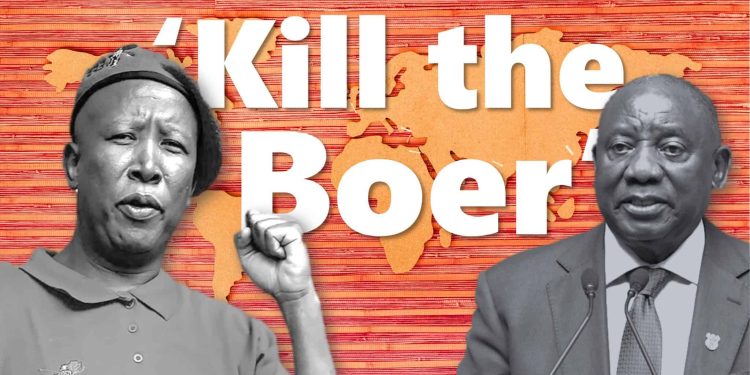Julius Malema’s recent performance of the contentious struggle song “Kill the Boer” has reignited fierce debate in South Africa, drawing sharp criticism from many white citizens while highlighting unresolved tensions over historical symbols. The song, rooted in anti-apartheid resistance, continues to polarize the nation decades after democracy.
The controversy has also brought renewed scrutiny to South Africa’s national anthem, which incorporates “Die Stem” – the apartheid-era anthem celebrating Afrikaner nationalism. Critics argue this creates a double standard: while “Kill the Boer” faces condemnation despite its historical context, “Die Stem” remains officially embraced as part of national reconciliation.
Originally an anti-apartheid rallying cry, “Kill the Boer” represents for many the brutal oppression of the past and ongoing frustrations over persistent economic inequality. EFF leader Malema has consistently defended its use, framing it as protest against unresolved land dispossession and economic exclusion. A 2022 Equality Court ruling found the song didn’t constitute hate speech when understood in its historical context.
Yet for white South Africans, particularly farming communities, the lyrics evoke genuine fears amid high rates of farm violence. This disconnect reveals the raw nerve of a nation still wrestling with its past.
The inclusion of “Die Stem” in South Africa’s post-1994 national anthem was intended as a unifying gesture. However, its celebration of Afrikaner identity remains painful for many Black South Africans who associate it with oppression. The differing reactions to these two symbols lay bare uncomfortable questions about whose history gets validated in democratic South Africa.
This controversy transcends music – it’s about power, memory, and who controls national narratives. The heated responses to both songs reveal more about current societal fractures than about the songs themselves. As South Africa continues its complex journey of reconciliation, these periodic flare-ups serve as reminders that true unity requires honest engagement with uncomfortable historical truths, not just symbolic gestures.
The ongoing debate forces South Africans to confront difficult questions: How does a nation honor liberation struggles without perpetuating division? Can historical symbols ever be truly neutral? These tensions will likely persist as the country grapples with defining its identity in the post-apartheid era.






















